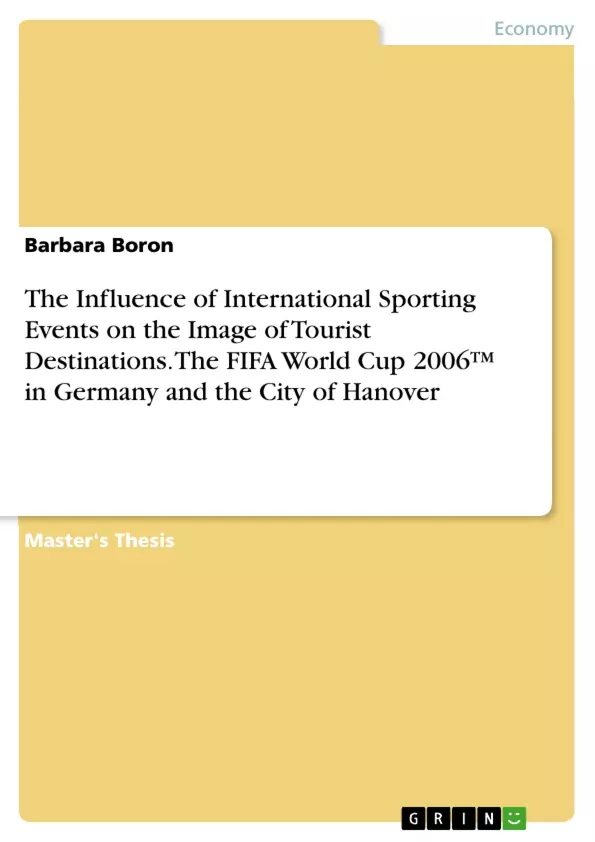International sporting events have gained an enormous popularity and importance both as a product within the leisure industry and as a marketing tool in destination marketing in the competition for visitors, residents and businesses between cities. This dissertation examines the influence of such international sporting events on the image of the host country or host city. The FIFA World Cup 2006™ serves as a case example, out of the host cities Hanover has been picked as an example.
Within the dissertation the following research questions will be explored and answered:
•Does image change happen due to international sporting events?
•If so is it positive or negative?
•Does the image change seem to be the same for host country and host city?
•Are image changes related to the level of involvement and type of ecperience the people have?
•Do image changes due to international sporting events have an influence on the people’s future travel plans? Should such sporting events therefore be of importance in destination management?
The answers were derived of secondary and primary data; an online survey has been conducted by the author for the purpose of this dissertation in which over 400 people participated. The findings of this survey have been supported through findings of two further surveys, one undertaken on behalf of the German Tourism board and one by the international student organisation AIESEC, who also have been examining issues concerning the FIFA World Cup 2006™.
Inhaltsverzeichnis (Table of Contents)
- Introduction
- Motivation and aim of dissertation
- Approach and method of dissertation
- Content of dissertation
- Definitions
- Event
- Image
- Destination management
- The FIFA World Cup 2006™ in Germany
- The destination
- Germany
- Host cities
- The event
- Games
- Football fan route
- Survey
- The questionnaire
- The sample
- Findings
- Visits to Germany during the FIFA World Cup 2006™
- Previous visits and contacts to Germany
- Image prior to the FIFA World Cup 2006™ and image changes
- “A time to make friends”
- Future travel plans
- Chat rooms and forums
- Further surveys
- Survey by the international student organisation AIESEC
- Survey on behalf of the German Tourism Board
- Reflection
Zielsetzung und Themenschwerpunkte (Objectives and Key Themes)
This dissertation examines the influence of international sporting events on the image of host countries and cities. Using the FIFA World Cup 2006™ in Germany, and specifically Hanover, as a case study, it aims to answer several key research questions regarding image changes, their positivity or negativity, and the impact on future travel plans. The study utilizes both primary and secondary data, including an online survey with over 400 participants. * Impact of international sporting events on destination image. * Positive or negative image changes resulting from such events. * Variations in image change between the host country and city levels. * Correlation between levels of event involvement and image perception. * Influence of event-related image changes on future travel decisions.Zusammenfassung der Kapitel (Chapter Summaries)
The introduction outlines the dissertation's motivation, methodology, and content. The definitions chapter clarifies key terms such as "event," "image," and "destination management." The chapter on the FIFA World Cup 2006™ provides background on the event and its German context, focusing on Hanover as a host city. The survey chapter details the methodology, sample, and key findings from the author's primary research, including pre- and post-event image perceptions. The subsequent chapters present data from additional surveys conducted by AIESEC and the German Tourism Board, offering comparative perspectives. A reflection chapter analyzes the findings and their implications.Schlüsselwörter (Keywords)
Destination image, international sporting events, FIFA World Cup 2006™, Germany, Hanover, tourism, event marketing, image change, surveys, primary data, secondary data, destination management, travel behavior.- Quote paper
- Barbara Boron (Author), 2006, The Influence of International Sporting Events on the Image of Tourist Destinations. The FIFA World Cup 2006™ in Germany and the City of Hanover, Munich, GRIN Verlag, https://www.grin.com/document/122875



